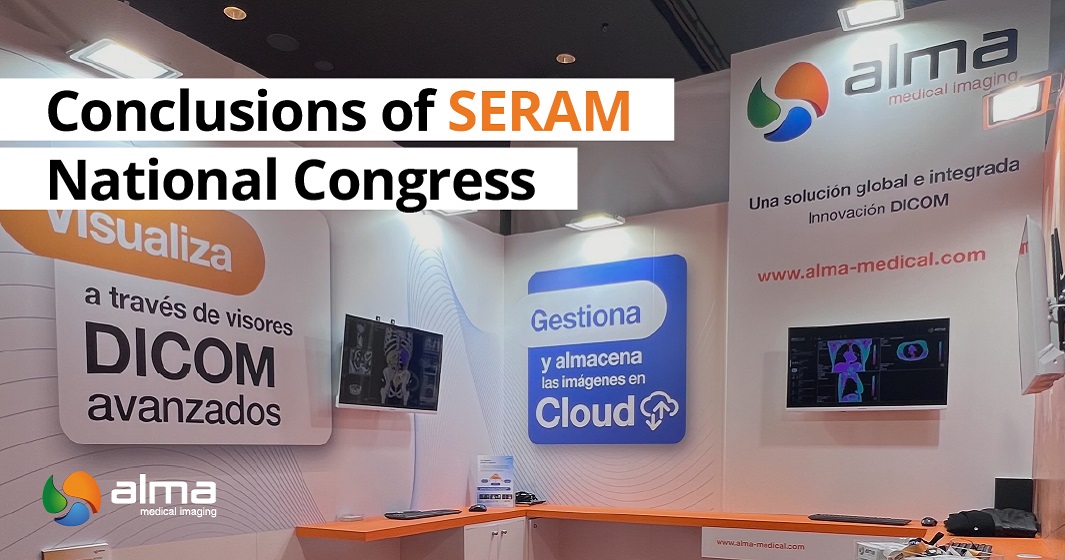A few days after the National Congress of SERAM, which we attended from May 22 to 25, we at Alma want to dedicate this publication to summarizing the conclusions we drew from the event.
During these sessions, we observed that innovation in radiology is very much in the spotlight, as well as the digitalization of pathological anatomy. Additionally, AI continues to gain presence thanks to the push from pilot tests and a progressive implementation.
Artificial Intelligence, the Star of the National Congress of SERAM
Given the promising functionalities, artificial intelligence is revolutionizing diagnostics, as there are already tools available to analyze medical images and detect pathologies that may be imperceptible to the human eye. Moreover, they reduce the reading time required by radiologists, thereby optimizing the radiological workflow.
The use of AI to automatically analyze images and optimize processes was, therefore, one of the key topics of the congress, with the presence of important companies like AZmed, dedicated to its development and commercialization.
Today, no one questions the potential of this technology, so the challenge lies in the need to integrate different algorithms into the clinical workflow and measure their impact on the center to assess their continuity.
Alma Medical Imaging’s Solution to Integrate AI into Clinical Practice
To address this challenge, at Alma we offer a consulting service where a team of experts will be at your disposal to assess your needs and identify the best solutions in each case.
We respond to a growing trend we observed at the congress: radiologists who want to integrate AI into their centers but face significant barriers to its incorporation. Here are some examples:
- Hospital managers who want evidence that the investment translates into cost savings, improved diagnostic quality, and other benefits.
- Managers who demand radiologists show AI’s impact on other healthcare areas, such as primary care.
- The demand for a measurable, gradual, and interdepartmental integration that is very difficult to achieve.
By addressing these requirements, we go beyond technical barriers to identify the options that best fit the center, measure their impact and the savings derived from their use, and assess their continuity, always backed by the knowledge of industry experts.
Undoubtedly, our attendance at the National Congress of SERAM has been a satisfying experience for which we want to thank everyone who visited our stand and, of course, the partners who accompanied us, reinforcing our proposal.
